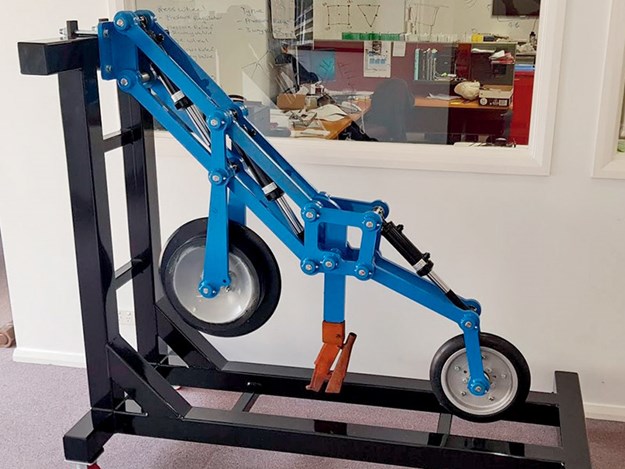Trials of a self-adjusting seed planter that monitors soil moisture are underway, and industry is watching closely
 |
|
A demonstration model of one row unit of the Tech-Enabled Broadacre Planter
|
Despite about 20 years of working in agricultural engineering and design, David Finlay says the humble planter always seems to be left behind when it comes to new technological developments.
“Out of all the technology on the planting equipment, there is nothing monitoring down where the seed is placed in the soil,” he says.
“We are quite excited to be focusing on that exact location for the purposes of increasing yield.”
What Finlay and the team at Moisture Plant Technologies predict is that by planting seeds at the same level of soil moisture, they will all grow together, resulting in what he calls “uniform emergence”.
“We are seeing a lot of guys where the ideal moisture profile is changing in depth by a few inches across a field,” he says.
“If we can optimise that seed placement so that we are achieving uniform emergence, we are going to see that we are going to reduce our horsepower requirements, which will lead to longer wearing equipment, less diesel burn, etc.
“We are proposing that if we can get uniform emergence, then that will in itself qualify to around about an 8–10 per cent increase in yield.”
To do this, the group has developed a tine-based Tech-Enabled Broadacre planter that can monitor the conditions of soil live while planting is taking place.
Using a mixture of artificial intelligence and integrated sensors, the planter can self-adjust to the optimal seeding depth when in auto-mode, or can adjust the seeding rate, so more seeds are released in better soils.
The planter is also able to operate without internet connectivity, and data collected by the planter can be extracted post-planting, to overlay with other data such as yield maps.
Trials of a 3 row unit are currently underway for in-field testing, with Finlay adding that the company is on track to have a 12m machine completed by April for field trials at three farms in New South Wales.
“There is incredible excitement, especially from the dryland areas,” he says, adding that while product was aimed at wheat and pulse croppers, enquiries had also started arriving from canola growers.
“Canola is typically a pretty hard crop to get uniform emergence on, because it is typically a shallow planted sort of seed… but now we are seeing guys planting canola down 75–100mm in WA,” Finlay says
“So while it wasn’t part of our typical clientele, because canola wasn’t planted at depth, now it is opening up new opportunities for us.”

